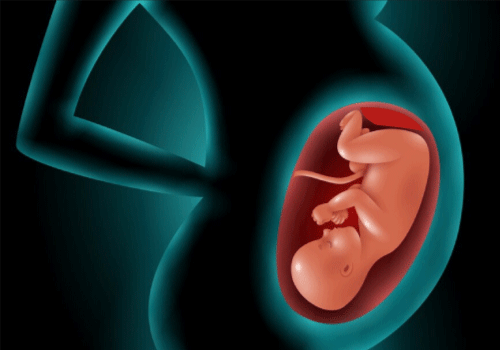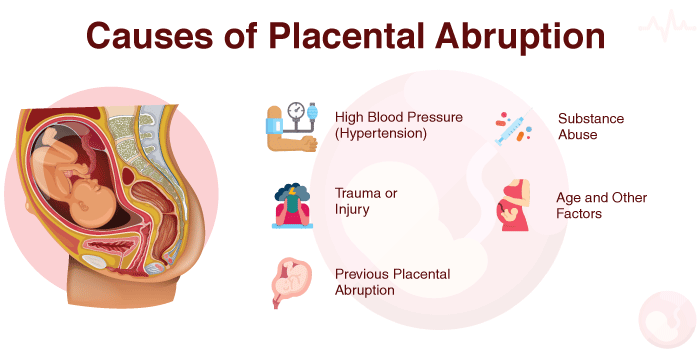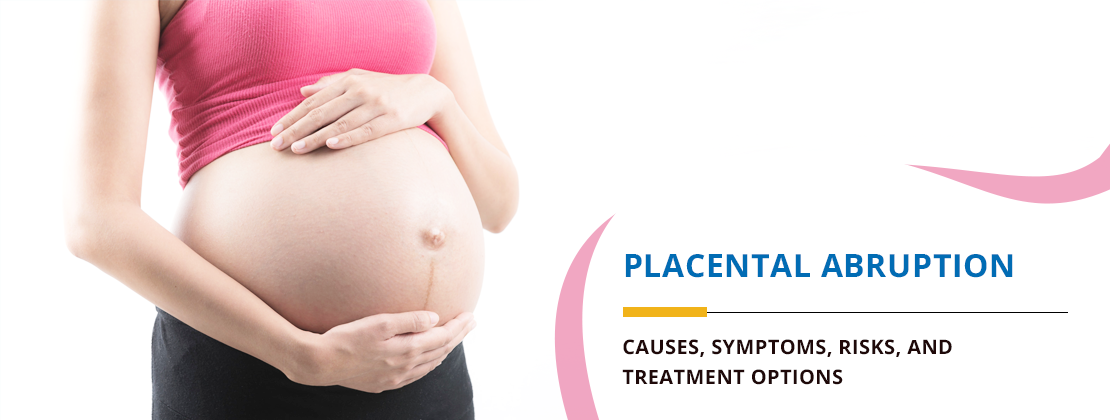Introduction
A placental abruption, also known as an abruptio placentae, is a serious complication of pregnancy where the placenta leaves the uterine wall even before delivery. It also poses a greater risk to both the mother and baby. Nutrient-oxygen compromise, causing preterm birth and profuse bleeding, could happen.
This article will discuss placental abruption, focusing on its aetiology, clinical manifestation, symptoms, complications, diagnosis, and possible treatment approaches.
What is Placental Abruption?

Placental abruption pertains to the premature separation of the placenta from the uterine wall, disrupting the flow of oxygen and nutrients to the foetus. This separation can ultimately go on to cause complications of possible developmental risks for the foetus and heavy bleeding for the mother.
The placenta covers the cervix and is usually attached to it. However, in placental abruption, it separates from its normal position. As separation occurs before birth, placental abruption manifests as a unique and critical pregnancy care concern.
Causes of Placental Abruption

Several factors contribute to placental abruption, including:
- High Blood Pressure (Hypertension): Placental abruption is mainly caused by chronic high blood pressure over time or high blood pressure that develops during pregnancy and affects the blood vessels.
- Trauma or Injury: Physical harm, for example, from falling or being involved in a road accident, may cause placental abruption by separating the placenta physically.
- Previous Placental Abruption: Women who have experienced placental abruption during their previous pregnancies have increased chances of it happening again.
- Substance abuse: Smoking, cocaine use, and other drug-related habits increase the chances of placental abruption.
- Age and Other Factors: Some more factors that may increase the risk of placental abruption include a mother being above 35 years old, carrying more than one baby, and having diabetes or clotting disorders.
Symptoms and Signs of Placental Abruption
Recognising the symptoms of placental abruption is crucial for timely intervention.
- Heavy Vaginal Bleeding: A most alarming sign of placental abruption is the sudden vaginal bleeding, which can be heavy.
- Abdominal Pain and Tenderness: Abruptio placentae is usually accompanied by intense colicky abdominal pain and fundal tenderness.
- Pain at the Back: Some patients may experience severe posterior pains.
- Uterine Contractions: Women with abruptio placentae mostly have regular, strong uterine contractions.
- Signs of Foetal Distress An abnormal pattern of the unborn foetal’s heartbeats, like slowing down or going too fast, shows that it is not comfortable due to placental abruption.
- Other Warning Signs: The mother feeling like she is about to faint or having low energy or blood pressure could mean that she is very sick because of abruptio placentae.
Risks and Complications for the Mother and Baby
Placental abruption poses significant risks for both the mother and the baby.
For the Mother:
- Severe Bleeding (Haemorrhage): Heavy bleeding can lead to life-threatening conditions and require immediate intervention.
- Shock and Organ Failure: Losing too much blood may cause one to go into shock or even have his organs stop working.
- Increased Risk of C-Section: Many times, complications arising from placental abruption lead to caesarean section.
For the Baby:
- Preterm Birth: Placental abruption increases the likelihood of preterm birth, posing health challenges.
- Low Birth Weight: Inadequate nourishment can lead to the baby being underweight at birth.
- Stillbirth: Insufficient oxygen and nourishment in severe abruptio placentae can cause foetal stillbirth.
- Long-Term Health Risks: Slow growth or brain disorders may follow in children’s development if they have experienced placental abruption.
Diagnosis of Placental Abruption
Accurate diagnosis is critical in managing placental abruption symptoms:
- Physical Examination: Doctors check for abdominal tenderness and bleeding to identify signs of placental abruption.
- Ultrasound: Although it is not very helpful in looking for small separations, ultrasound imaging is commonly used.
- CT scan or MRI: Sophisticated imaging techniques can determine the severity of abruptio placentae.
- Foetal Monitoring: Continuous monitoring of the baby’s heart rate helps detect distress caused by placental abruption.
- Blood Tests: These tests evaluate the mother’s blood count and clotting factors to determine the extent of complications.
Treatment Options for Placental Abruption

Placental abruption treatment often involves:
- Immediate Medical Attention: This condition requires immediate intervention in order to protect the mother and the foetus.
- Hospitalisation: Round-the-clock care from specialists is required to manage placental abruption effectively.
- Foetal Monitoring: Continuous monitoring of the foetal heart rate for stability.
- Medications: Medications for managing high blood pressure, preventing blood clots, and promoting foetal lung development.
- Vaginal Birth: It can occur when there is a slight placental abruption.
- C-Section: The most serious cases must make sure that both the mother and the baby are safe.
- Blood Transfusions: A blood transfusion might be needed if there is massive blood loss due to placental abruption.
When to Seek Immediate Medical Care
Go to the hospital immediately if you have any placental abruption symptoms, such as a lot of blood from the vagina, severe abdominal pain, or signs of foetal distress. The key to the effective management of placental abruption is to act fast. Visit HCG Hospitals for proper identification and treatment.
Conclusion
Placental abruption is a life-threatening condition that needs quick medical help. Mothers can protect themselves and their children if they know the causes and signs. When the signs of placental abruption are observed, it is necessary to seek immediate medical attention and follow the medical instructions given by the doctor.



